Research Interests
My research in Biological Anthropology focuses on how behavioral and physiological strategies are used to cope with environmental pressures. Determining how species mitigate environmental stress is central to an understanding of human and non-human primate evolution and health, and is also critical for forecasting the fates of species in the face of climate change and habitat degradation.
Active projects include the evolution of shared infant care, noninvasive field methods (for hormone analysis and individual animal ID), and modeling inter- and intra-specific responses to habitat fragmentation. Along with these research interests, I am actively engaged in conservation in Madagascar, and co-founded the Palm Oil Awareness Initiative, which strives to change consumer behavior surrounding conflict palm oil through education.
Active projects include the evolution of shared infant care, noninvasive field methods (for hormone analysis and individual animal ID), and modeling inter- and intra-specific responses to habitat fragmentation. Along with these research interests, I am actively engaged in conservation in Madagascar, and co-founded the Palm Oil Awareness Initiative, which strives to change consumer behavior surrounding conflict palm oil through education.
Lab Work
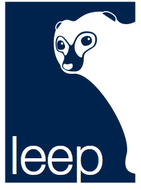
Laboratory for the Evolutionary Endocrinology of Primates (LEEP), University of Arizona
We analyze the physiological data that we collect in the field in LEEP. We have developed assays for several steroids extracted from fecal samples, and can run commercial ELISA kits. LEEP is also a space for students and researchers to learn assay methods and analyze their own data, and we provide training and guidance as needed. Volunteers can apply to work in the lab through the University of Arizona UBRP program. We accept volunteers outside of this program as well. For more information, visit our website. For questions about volunteering or working in the lab, contact us at 520-621-6367 or email stecot[at]email.arizona.edu.
Logo by Darren Simoes.
We analyze the physiological data that we collect in the field in LEEP. We have developed assays for several steroids extracted from fecal samples, and can run commercial ELISA kits. LEEP is also a space for students and researchers to learn assay methods and analyze their own data, and we provide training and guidance as needed. Volunteers can apply to work in the lab through the University of Arizona UBRP program. We accept volunteers outside of this program as well. For more information, visit our website. For questions about volunteering or working in the lab, contact us at 520-621-6367 or email stecot[at]email.arizona.edu.
Logo by Darren Simoes.
Fieldwork
I work in Ranomafana National Park, a UNESCO World Heritage site in south-eastern Madagascar. I conduct research in three sites: Talatakely, Vatoharanana, and Valohoaka. I also have an active project in Kirindy Mitea National Park, a site managed by Dr. Rebecca Lewis.
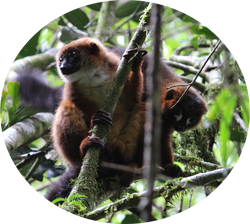
The Ranomafana Red-Bellied Lemur Project was initiated in 2010 by Rachel Jacobs and me. Our aim is to establish a long-term demographic dataset on the red-bellied lemur population in Ranomafana National Park in order to determine current population size and track individual reproductive success and population growth/decline over time. We use non-invasive techniques to identify individual red-bellied lemurs, specifically photography and genetic analyses using fecal samples. We have developed and are optimizing a computer-assisted facial recognition program (in collaboration with Dr. Anil Jain and colleagues from Michigan State University) for use in long-term behavioral research and population monitoring of red-bellied lemurs. Ultimately, our goal is to make this tool accessible to researchers and nonprofessionals to facilitate large-scale and long-term research on this vulnerable species.
Research in Progress
Evolution and Mechanisms of Allomaternal care
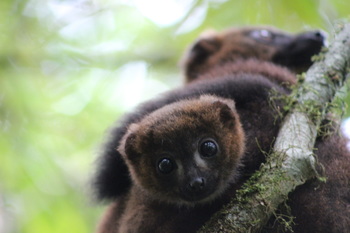
Many primate mothers receive help caring for their infants, but this 'allomaternal care' is rare in other mammals. Our research asks 1) Why is allomaternal care prevalent in primates?; 2) Is it adaptive, and if so how does it increase survival and reproduction?; and 3) How does it occur? What explains individual variation?
Andrea Baden and I are now using the red-bellied lemur (Eulemur rubriventer) as a model species to study how and why allomaternal care occurs (for more information, see here). This species is one of few lemurs in which non-maternal kin habitually carry infants. This research has been supported by The L.S.B. Leakey Foundation, American Association of Physical Anthropologists, Rowe-Wright Primate Foundation, the University of Arizona, and Hunter College. Watch our Leakey Lunch Break Science talk here. Relevant publications include Hrdy 2010; Tecot et al. 2012; Tecot et al. 2013; Tecot & Baden 2015; Tecot and Baden 2018; Tecot et al. 2023
Andrea Baden and I are now using the red-bellied lemur (Eulemur rubriventer) as a model species to study how and why allomaternal care occurs (for more information, see here). This species is one of few lemurs in which non-maternal kin habitually carry infants. This research has been supported by The L.S.B. Leakey Foundation, American Association of Physical Anthropologists, Rowe-Wright Primate Foundation, the University of Arizona, and Hunter College. Watch our Leakey Lunch Break Science talk here. Relevant publications include Hrdy 2010; Tecot et al. 2012; Tecot et al. 2013; Tecot & Baden 2015; Tecot and Baden 2018; Tecot et al. 2023
Preserving knowledge of endemic species in Madagascar through storytelling
Firaiketana amin’ny alalan’ny fitantaràna ny fahalalana manokana momban’ny zavaboahary izay tsy misy afa-tsy eto Madagasikara
The goal of this project is to document, preserve, and disseminate ecological knowledge of a biodiversity hotspot and UNESCO heritage site in Madagascar. Tourist guides and research technicians in Ranomafana National Park will speak about their vast knowledge of the forest and its plants and animals, based on decades living and working in the region. Video vignettes and podcasts of interviews will be shared online and via radio broadcasts in Madagascar. We hope that their words will inspire the next generation of Malagasy naturalists, while highlighting the extensive knowledge of local experts. This work is supported by the UA School of Anthropology, and conducted in collaboration with Arielle Liu, Clara Randimbiarimanana, Rhodin Rafidymanandray and the Ranomafana Tourist Guide Association, Jessie Jordan, and the Centre ValBio.
The goal of this project is to document, preserve, and disseminate ecological knowledge of a biodiversity hotspot and UNESCO heritage site in Madagascar. Tourist guides and research technicians in Ranomafana National Park will speak about their vast knowledge of the forest and its plants and animals, based on decades living and working in the region. Video vignettes and podcasts of interviews will be shared online and via radio broadcasts in Madagascar. We hope that their words will inspire the next generation of Malagasy naturalists, while highlighting the extensive knowledge of local experts. This work is supported by the UA School of Anthropology, and conducted in collaboration with Arielle Liu, Clara Randimbiarimanana, Rhodin Rafidymanandray and the Ranomafana Tourist Guide Association, Jessie Jordan, and the Centre ValBio.
Neuroendocrine Methods
Much of our work entails determining whether we are measuring what we think we're measuring! Some relevant publications include our work on diurnal patterns of glucocorticoid excretion (Tecot et al. 2023) and methods for detecting oxytocin in urine and plasma (Gnanadesikan et al. 2021 and Gnanadesikan et al. 2022).
Responses to environmental change and habitat disturbance
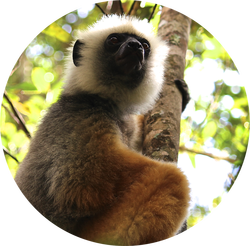
To study the energetic strategies primates use to cope with a changing environment, whether it be natural or anthropogenic change, we employ a combination of methods. We collect data on the ecology (including plant phenology and climate), behavior, hormones, parasites, and ranging of several species located in a range of habitats that vary in quality. These species include red-bellied lemurs and Milne-Edwards' sifaka in Ranomafana National Park, and the diademed sifaka in Tsinjoarivo. Collaborators include Jean Luc Raharison and Drs. Mitchell Irwin, Jukka Jernvall, Jason Kamilar, Randall Junge, Karen Samonds, and Patricia Wright. This work has been funded in part by the American Association of University Women, Conservation International Primate Action Fund, PEO Foundation, National Geographic Society, National Science Foundation, Primate Conservation, Inc., and University of Texas-Austin. Relevant publications include: Wright et al. 2011; Tecot 2013; and Kamilar and Tecot 2016; Tecot et al. 2019.
The Benefits and Mechanisms of Human-Animal Interaction

With funding from the NICHD and WALTHAM foundation, The Arizona Canine Cognition Center and the Laboratory for the Evolutionary Endocrinology of Primates are part of a collaborative team investigating the biology of human-animal interactions in our study "Oxytocin pathways and the health effects of human-animal interaction".
Socioecology and sexual selection: Male bonding and female agency
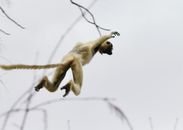
With funding from the National Science Foundation, we are collaborating with Dr. Rebecca Lewis and other researchers at the University of Texas-Austin on Collaborative Research: The function and mechanism of male intrasexual relationships in a variable system: resistance, tolerance, or bonding, and the role of females. This work combines field and lab research in Kirindy Mitea National Park, Madagascar and the Laboratory for the Evolutionary Endocrinology of Primates.
Gut microbiota, social behavior, and stress
Microbial communities in the gut reflect how organisms interact with their environment, and can greatly impact health. They can be highly variable and flexible. Our research is aimed at determining social and ecological sources of this variation, and impacts on the hypothalamic-pituitary-adrenal axis, which is involved in responding to stress. Our work takes place in Ranomafana National Park, Madagascar and is focused on the red-bellied lemur. Our newest research is focused on exploring the role of the gut microbiome in allomaternal care, in collaboration with Dr. Laura Grieneisen. Relevant publications include Raulo et al. 2017; Amato et al. 2018; Mann et al. 2019.
Maternal-infant relationships and neuroendocrine mechanisms: the roles of early life adversity and opioid use disorder in mothers in Tucson
We are working on several projects involving new mothers in the Tucson community. Our research with a population of new mothers diagnosed with opioid use disorder includes two projects: 'Hormonal Response to Infant Caregiving: A Novel Strategy to Break the Opioid Relapse Cycle during the Postpartum Period', and 'Perinatal stress, social support, and neuroendocrine regulation among mothers with opioid use disorder and their infants: Implications for infant attachment and development'. This work is in collaboration with Drs. Alicia Allen and Linnea Linde-Krieger in the College of Medicine at UArizona, and Dr. Lela Rankin in the School of Social Work at Arizona State University. This work also involves graduate students in Medicine (Lisa Grisham, Stephanie Mallahan) and Anthropology (Katie King). Learn more about the research here (The ORCHID study and the PEACH study).
Our research in collaboration with the College of Nursing is entitled 'A Randomized Controlled Trial to Improve Mother-Infant Synchrony among Women with Childhood Adversity'. This research is led by Dr. Aleeca Bell , and includes Drs. Evan MacLean, Sue Carter, Rosemary White-Traut, Ruth Feldman, Ed Bedrick, and Shripad Sinari.
Our research in collaboration with the College of Nursing is entitled 'A Randomized Controlled Trial to Improve Mother-Infant Synchrony among Women with Childhood Adversity'. This research is led by Dr. Aleeca Bell , and includes Drs. Evan MacLean, Sue Carter, Rosemary White-Traut, Ruth Feldman, Ed Bedrick, and Shripad Sinari.
Face recognition for long-term research and monitoring
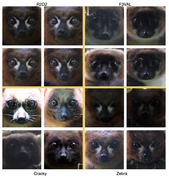
LemurID: Protect with Tech! Our team of ecologists, primatologists, and computer scientists (Rachel Jacobs, Scott Klum, David Crouse, Zach Richardson, and Anil Jain) developed a noninvasive facial recognition tool that can be used by scientists and non-scientists to identify individual red-bellied lemurs. With new funding from the UA Faculty Seed Grant, Rachel Jacobs and I worked with the University of Arizona's Eller Tech Core (Ash Black, Victoria Ogino, Trevor Hiroshiwa, Dori Enzler, and teams of undergraduate interns) to develop a system that can be used online. This work will facilitate long-term research that is critical for assessing fitness strategies, it will be used as a population survey tool to assess conservation status, and it will be used to monitor population dynamics. It will also provide an interactive platform to enhance connections to biodiversity for tourists and local communities, and ultimately we hope that it would provide a potential law enforcement tool for monitoring a growing threat to lemur populations: capture for the national pet trade.
With partners in Madagascar we plan to train others in the use and development of this tool, to be used in other contexts and with additional species. This work is supported by IdeaWild and a UA Faculty Seed Grant. See our technical report and Crouse et al. 2017.
With partners in Madagascar we plan to train others in the use and development of this tool, to be used in other contexts and with additional species. This work is supported by IdeaWild and a UA Faculty Seed Grant. See our technical report and Crouse et al. 2017.
Reproduction and life history
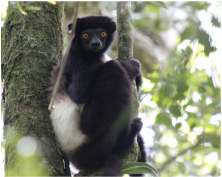
We are investigating the different strategies used by males and females regarding growth, development, reproduction, and aging. This work includes long-term data on Milne-Edwards' sifaka (from Dr. Patricia Wright) and red-bellied lemurs, as well as data on brown mouse lemurs. Relevant publications include: Tecot 2010; King et al. 2011, 2012; Wright et al. 2012; Tecot et al. 2012, 2013; Zohdy et al. 2014; and Kamilar & Tecot 2015. This work is in progress.
Past Research
Social systems and signaling
Why primates live in groups is a long-studied question in primatology. I've worked with Natalie Romine and Drs. Deborah Overdorff, Britt Singletary, and Elizabeth Eadie to determine why and how pair-living, pair-bonding, and monogamous mating evolve and are maintained. The work on signaling was led by Dr. Singletary for her Master's thesis. Relevant publications include Overdorff & Tecot 2006; Tecot et al. 2016; Singletary and Tecot 2019; and Singletary and Tecot 2020.
Making an alpha male
With Drs. Kathy Jack and Eva Wikberg, we will use a decade of behavioral data and hormone samples on white-faced capuchin monkeys in Costa Rica to determine the factors influencing which males become dominant. This work is funded by the L.S.B. Leakey Foundation, The Nacey Maggioncalda Foundation, and National Geographic Society.
Breastfeeding support and challenges
With Dr. Ivy Pike and a group of students in the BS in Human Biology internship, we are collaborating with birthing center and pregnancy outreach partners in Tucson to assess the 1) effectiveness of their programs in helping women meet CDC guidelines, and 2) challenges to meeting those goals.
